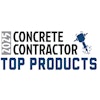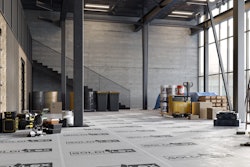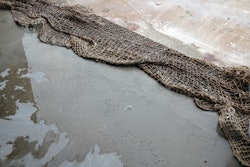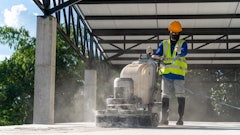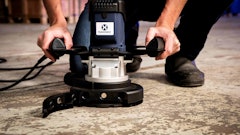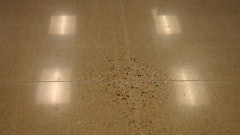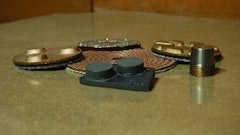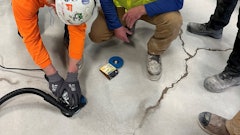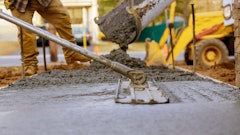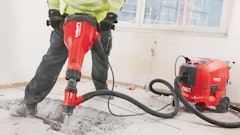A polished concrete floor project can be a tough job to bid because of the many variables a contractor needs to consider — labor, abrasives, the floor itself, just to name a few. As such, polishing contractors need to be prepared and ready to adjust for variables on the jobsite. It also makes defining a job's cost upfront an even greater challenge.
Repairs
Planning for repairs can be one of the most challenging issues a contractor will face when bidding an existing floor project. Always remember, sometimes toppings like carpeting and tile were put on a floor because the concrete was bad in the first place.
Spall repairs can cause unforeseen costs and challenges. Spall repairs required beyond the allowance in the bid are priced out in an addendum to the bid, as are necessary crack repairs and spalling along joints.
Utilities
Make sure power in the correct voltage will be available on site. If it is not, the power for your equipment will need to come from portable generators. The same goes for water.
Construction/job schedule
Find out how much time you have to perform your work and during what times of the day you can do it. If you are working under a tight schedule, or working a job on an existing building still being used for business, you may find yourself confined to do your work nights and weekends. If that is the case, you will need to pay your employees a premium and consider those extra labor costs in your bid.
A job schedule, i.e., a plan that lays out when certain trades will be in a building and who they will be working around. What is especially important to pay attention to is two things: floor protection and walls. You may have to arrange for floor protection before and/or after your polishing job. Be sure it is clear in the bid who is responsible for installing floor protection and who will pay for it.
You will also need to know if you will be polishing before or after the walls are built.
Edges and handwork
Your edging costs should include handwork necessary to grind and polish steps, embeds like floor drains and pipes, or any other spot where you stop your floor grinder and have to pull out smaller tools.
Ask the general contractor for the as-built drawings of the structure. The drawings will give reflect changes that were made to the original plans and give you the most accurate look at the building.
Samples
Make it clear to your clients that samples and mock-ups are not free. Charging helps you attract the clients who are serious.
Abrasives
There are several factors that will affect your abrasives costs, including hardness of concrete and the number of steps you are required to perform throughout the grinding and polishing process.
Cut
Cream, salt and pepper, or aggregate – if the desired cut of the floor is not clear in the specifications, make sure it is before you submit your final numbers on the job.
Floor flatness
On new construction projects, ask for a floor flatness report before you start grinding. This way you know exactly what FF and FL numbers you will be dealing with. These numbers can affect your labor costs and diamond expenditure.
Joints
Most specifications will require the polisher to do joint work on the floor. While a saw cut control joint might be 1/8-inch wide, a construction joint can be ½ inch wide. Your joint filler material needs will vary depending on the types of joints in your floor. That material isn't free; plan for that amount in your bid.
Disposal
Take a look at you job and decide if it will be a wet grind or dry grind. You will need to factor into your bid equipment and costs for dust control or slurry disposal.

